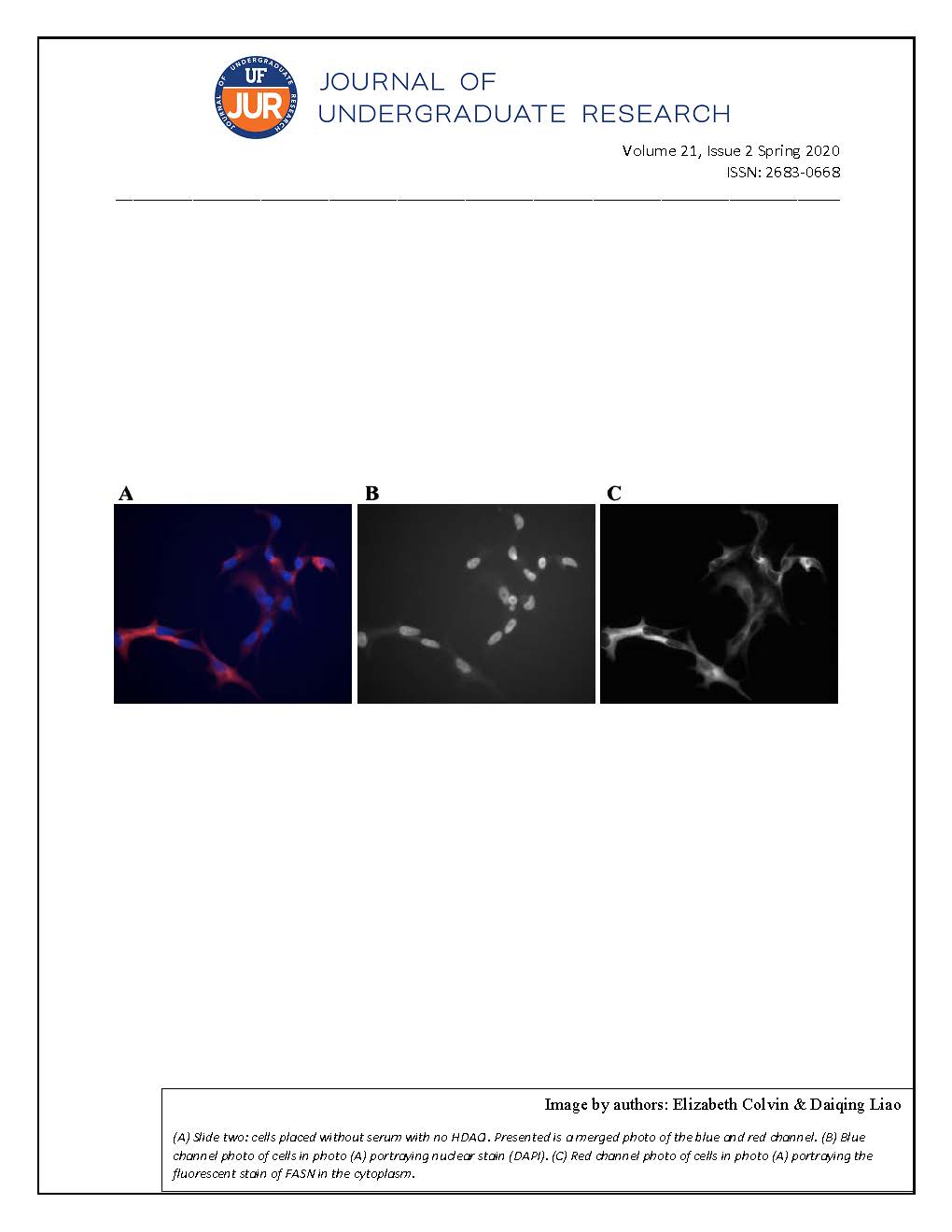The Synthesis of Protein Polymer Conjugates using the Human Regulatory Protein Galectin-3
DOI:
https://doi.org/10.32473/ufjur.v21i2.108726Keywords:
galectin-3, Maleimide-terminated polyethylene oxide, cysteine thiol-Michael addition, polymer bioconjugateAbstract
Galectin-3 (gal3) is a human lectin protein that is known to interact with extracellular matrix proteins by regulating functions in both healthy and cancerous cells. The goal of this project is to conjugate polymers to gal3 to better study and control its functions in vitro. We hypothesize that a covalently attached polymer will sterically modulate gal3 function. In the project, we created two protein variants with polymer-reactive handles. The first construct is similar to wild-type gal3 with a cysteine in place of the 6th serine (S6C) which was created by site-directed mutagenesis (SDM). Maleimide-terminated polyethylene oxide (PEO, 5000 g/mol) was then attached to this mutant via thiol-Michael addition at the cysteine site. Attachment of polymer to the unstructured N-terminal domain (NTD) may increase the binding of the protein by sterically pulling the NTD away from the carbohydrate recognition domain (CRD). In addition, the NTD, which is implicated in undesired self-association, was removed for the second construct. The gal3 CRD only construct is shown to have a higher solubility in solution and an increased ligand-binding affinity. Ultimately, the two unique constructs will help us understand the structural role of the NTD in gal3 ligand-binding and self-association.
Downloads
Published
Issue
Section
License
Some journals stipulate that submitted articles cannot be under consideration for publication or published in another journal. The student-author and mentor have the option of determining which journal the paper will be submitted to first. UF JUR accepts papers that have been published in other journals or might be published in the future. It is the responsibility of the student-author and mentor to determine whether another journal will accept a paper that has been published in UF JUR.

